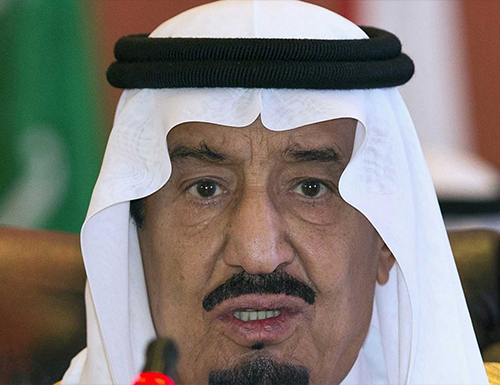NewsRescue
The Saudi Arabia-Russia deal earlier this month to fix production at January levels, which also includes Qatar and Venezuela, is the beginning of a process which will take several years to increase oil prices to somewhere around $60/barrel, a new stable.
Saudi Arabia Has An Agenda, A Geopolitical Motive

It is known that the Sauds backed Syrian opposition groups including AlQaeda and ISIS to topple Assad. The plot however failed as the Assad Syrian troops proved resilient and with support from Iran and Russia, the tide finally turned against the terrorists after most of Syria was destroyed.
#Saudi Arabia Crashed Global Oil Prices To Punish #Russia, #Iran
Posted by NewsRescue on Monday, February 22, 2016
Fadel Gheit said that the Saudi mission to punish Iran and Russia has not yet been accomplished and so Saudi Arabia is not yet going to allow oil prices rise as they will keep over-flooding the market.
Only Saudi and the Gulf states are producing at the max or more than their OPEC stipulations. Other nations produce less than their quota.
See: Related from 2014- Saudi Arabia using its oil as a weapon to punish Russia and Iran

The House of Saud’s oil policy is even more opaque than its foreign policy. But the kingdom has two targets in its latest oil war: It is trying to squeeze US shale oil — which requires higher prices to remain competitive with conventional production — out of the market. The Saudis are also punishing two rivals, Russia and Iran, for their support of Bashar al-Assad’s regime in the Syrian civil war. Since the Syrian uprising began in 2011, regional and world powers have played out a series of proxy battles there. As Saudi Arabia and Qatar armed many of the Syrian rebels, the Iranian regime — and to a lesser extent, Russia — have provided the weapons and funding to keep Assad in power.
The consequences of Saudi policy are impossible to ignore. After two years of stable prices at around $105 to $110 a barrel, Brent blend, the international benchmark, fell from $112 a barrel in June to around $65 today. “What is the reason for the United States and some US allies wanting to drive down the price of oil?” Venezuelan President Nicolas Maduro asked rhetorically in October. His answer? “To harm Russia.”
Russia and Iran are highly dependent on stable oil prices. By many estimates, Russia needs prices at around $100 a barrel to meet its budget commitments. Iran, facing Western sanctions and economic isolation, needs even higher prices. Already Iran has taken an economic hit from the Saudis’ actions. On Nov. 30, as a result of OPEC’s decision not to increase production, the Iranian rial dropped nearly 6 percent against the dollar.
The kingdom believes it can protect itself from the impact of the price drops. It can always increase oil production to make up for falling prices, or soften the blow of lower profits by accessing some of its $750 billion stashed in foreign reserves. Read full
See from 2014: Did The Saudis And The US Collude In Dropping Oil Prices? –OilPrice.com

While the market explanation is partially true, it is simplistic, and fails to address key geopolitical pressure points in the Middle East.
Oilprice.com looked beyond the headlines for the reason behind the oil price drop, and found that the explanation, while difficult to prove, may revolve around control of oil and gas in the Middle East and the weakening of Russia, Iran and Syria by flooding the market with cheap oil. Read full





